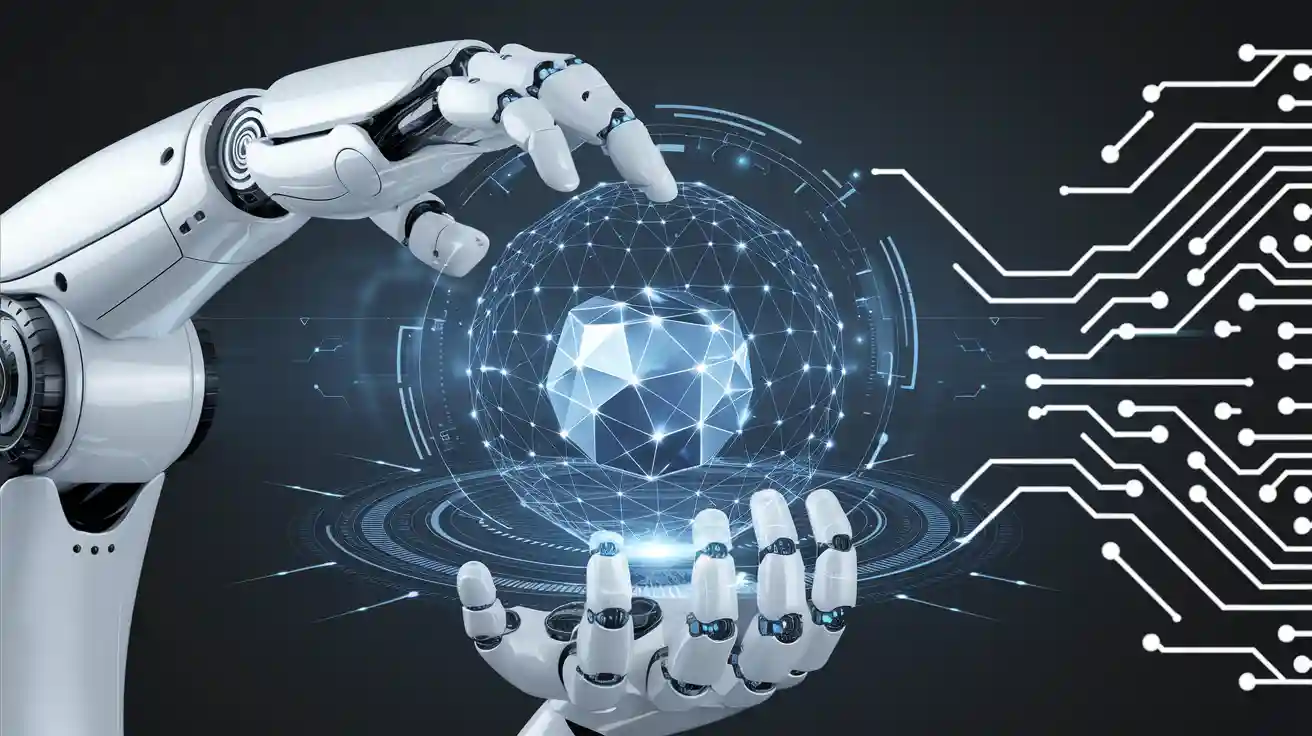Feature Detection in Machine Vision Systems Explained

Feature detection algorithms play a crucial role in a machine vision system by helping machines identify meaningful patterns within an image, facilitating tasks such as object detection and 3D reconstruction. Advanced methods, including neural networks, achieve sub-pixel accuracy even in complex scenarios. Algorithms like SVM and Gradient Boosting showcase over 99% accuracy, significantly improving the performance and efficiency of machine vision systems in real-world applications.
Key Takeaways
- Feature detection helps machines find patterns in pictures. It allows tasks like finding objects and building 3D models.
- Good features should stand out, work repeatedly, and stay the same in different situations.
- Picking the right feature detection method is important. Think about how fast and accurate it needs to be for your task.
Core Concepts of Feature Detection
What Are Features in Images?
In the context of computer vision, features are specific patterns or structures in an image that stand out and carry meaningful information. These could include corners, edges, blobs, or keypoints. For example, the corner of a building or the edge of a road can serve as a feature. Features help machines understand the content of an image by identifying areas of interest.
To better understand the scope of features, consider the components of a machine vision system:
| Component | Description |
|---|---|
| Image Capture | Acquiring images using cameras or sensors. |
| Light Source System | Providing illumination necessary for image capture. |
| Image Digitization Module | Converting captured images into a digital format for processing. |
| Digital Image-Processing Module | Applying algorithms for enhancing and analyzing images. |
| Intelligent Judgment Module | Making decisions based on processed image data. |
| Mechanical Control Execution Module | Executing physical actions based on decisions made by the system. |
Features play a critical role in the "Digital Image-Processing Module" by identifying significant points or regions for analysis. These features are unique, repeatable, and robust against changes in lighting or scale, making them essential for tasks like object recognition and image stitching.
Why Are Features Important in Machine Vision Systems?
Features are the foundation of many machine vision tasks. They allow systems to detect objects, track movements, and even reconstruct 3D environments. Without features, a machine vision system would struggle to interpret the visual world.
Research highlights the importance of features in improving system performance. For instance, a study on classifying live and dead cells found that selecting the right features significantly enhanced accuracy. Another study emphasized the role of lighting in feature extraction. Poor lighting led to confusion in defect detection, while optimized lighting improved classification accuracy. These findings underline how features directly impact the effectiveness of machine vision systems.
Key Properties of Features (e.g., distinctiveness, repeatability, invariance)
Not all features are created equal. High-quality features share three key properties:
- Distinctiveness: Features must be unique enough to stand out in an image. For example, variations in intensity patterns make it easier to locate and match features.
- Repeatability: A good feature should be detectable in multiple images of the same object, even under different conditions. Experiments show a high percentage of repeatable features in such scenarios.
- Invariance: Features should remain stable despite changes in scale, rotation, or lighting. This ensures that the system can recognize objects in varying environments.
To evaluate these properties, researchers use tests like "Feature Extractor Repeatability" and "Matching Score."
| Test Type | Purpose |
|---|---|
| Feature Extractor Repeatability | Measures the overlap of detected regions in two images of the same scene based on feature geometry. |
| Matching Score | Assesses distinctiveness by comparing local feature descriptors in planar scenes. |
By focusing on these properties, you can ensure that your machine vision system detects reliable and robust features.
Components of Feature Detection Algorithms in Machine Vision Systems
Feature Detection Techniques
Feature detection techniques identify key points or regions in an image that stand out due to their unique properties. These techniques form the foundation of computer vision tasks by enabling systems to locate areas of interest. Common methods include edge detection, corner detection, and blob detection. For example, edge detection highlights boundaries between objects, while corner detection identifies points where two edges meet.
Recent studies reveal challenges in feature detection. A meta-analysis highlights variability in datasets and evaluation metrics, which complicates the selection of the most effective technique for specific applications. While deep learning models excel on benchmark datasets, they often struggle in real-world scenarios due to high computational demands and reliance on training data. These findings emphasize the importance of choosing the right technique based on the context.
Feature Description Algorithms
Once features are detected, feature descriptor algorithms encode them into numerical representations. These descriptors allow systems to compare and match features across different images. Popular algorithms include SIFT, SURF, and ORB. Each has unique strengths. For instance, SIFT provides robust matching accuracy, while ORB offers high computational efficiency.
Empirical results demonstrate the effectiveness of these algorithms. A comparison of performance metrics shows that CNN-based descriptors achieve the highest matching accuracy, while ORB excels in computational efficiency. This balance between accuracy and speed makes feature descriptors essential for real-time applications like autonomous vehicles and facial recognition.
| Algorithm | Performance Metric | Result |
|---|---|---|
| SIFT | Matching Accuracy | Lower |
| SURF | Matching Accuracy | Moderate |
| ORB | Matching Accuracy | Moderate |
| CNN | Matching Accuracy | Higher |
| Computational Efficiency | Best |
Feature Matching Methods
Feature matching methods compare descriptors to find corresponding features between images. This step is crucial for tasks like image stitching and 3D reconstruction. Common methods include Brute-Force Matching, FLANN (Fast Library for Approximate Nearest Neighbors), and KNN (k-Nearest Neighbors). These algorithms evaluate the similarity between descriptors to establish matches.
Performance benchmarks highlight the strengths of different matching methods. For example, studies in medical imaging and laparoscopic video analysis show that algorithms like SIFT and ORB1000 perform well in terms of accuracy and speed. Metrics such as the number of features matched per frame and computational efficiency provide valuable insights into their effectiveness.
- SIFT offers high accuracy but requires more computational resources.
- ORB1000 balances accuracy and speed, making it suitable for real-time applications.
- A-KAZE and BRISK excel in specific contexts, such as low-light conditions or high-speed video analysis.
By understanding these methods, you can select the most appropriate approach for your machine vision system.
Popular Feature Detection Algorithms in Machine Vision Systems

Interest Point Detection Algorithms (e.g., Harris Corner, FAST, SIFT)
Interest point detection algorithms identify specific points in an image that stand out due to their unique properties. These points often correspond to corners, edges, or blobs. For example, the Harris Corner Detector excels at finding corners by analyzing intensity changes in multiple directions. FAST (Features from Accelerated Segment Test) offers a faster alternative by using a circle of pixels around a candidate point to determine if it qualifies as a corner. SIFT (Scale-Invariant Feature Transform) goes a step further by ensuring robustness against scale and rotation changes. You can rely on these algorithms to detect reliable features for tasks like object tracking and 3D reconstruction.
Feature Descriptor Algorithms (e.g., SURF, ORB, BRIEF)
Feature descriptor algorithms encode detected points into numerical representations, making it easier to compare features across images. SURF (Speeded-Up Robust Features) provides a balance between speed and accuracy, while ORB (Oriented FAST and Rotated BRIEF) is optimized for computational efficiency. BRIEF (Binary Robust Independent Elementary Features) simplifies descriptors into binary strings, enabling faster comparisons. These algorithms are essential for applications requiring real-time processing, such as autonomous navigation.
Feature Matching Algorithms (e.g., Brute-Force Matching, FLANN)
Feature matching algorithms compare descriptors to find corresponding points between images. Brute-Force Matching evaluates every possible pair, ensuring accuracy but at a high computational cost. FLANN (Fast Library for Approximate Nearest Neighbors) uses advanced data structures like KD-Trees to speed up the process, making it ideal for large datasets.
| Algorithm | Methodology | Advantages | Performance Characteristics |
|---|---|---|---|
| Brute-Force Matching | Compares each descriptor in one image with every descriptor in another | Straightforward and reliable | Computationally expensive for large datasets |
| FLANN | Uses efficient data structures like KD-Trees and LSH for fast matching | Optimized for speed | Provides approximate matches quickly, suitable for large datasets |
These algorithms play a critical role in feature detection algorithms machine vision system, enabling accurate and efficient matching for tasks like image stitching and object recognition.
Feature detection is a cornerstone of computer vision applications, enabling machines to interpret visual data with precision. By following the steps of detection, description, and matching, you can build systems capable of tasks like image recognition and 3D reconstruction. Its impact spans industries:
- Tesla’s Autopilot uses real-time feature detection for lane assistance and self-parking.
- Facial recognition systems improved error rates from 4% in 2014 to 0.08% by 2020.
- Industrial automation leverages predictive maintenance to reduce downtime.
These advancements showcase how feature detection transforms technology, making it indispensable in modern computer vision.
FAQ
What is the difference between feature detection and feature matching?
Feature detection identifies key points in an image. Feature matching compares descriptors to find corresponding points across images. Both steps are essential for machine vision tasks.
How do lighting conditions affect feature detection?
Lighting changes can alter feature visibility. Optimized lighting improves detection accuracy, while poor lighting may cause errors in identifying features or matching them across images.
Can feature detection work in real-time applications?
Yes! Algorithms like ORB and FLANN enable real-time feature detection and matching. These methods balance speed and accuracy, making them ideal for autonomous vehicles and facial recognition systems.
💡 Tip: Choose algorithms based on your application’s speed and accuracy requirements for optimal performance.
See Also
Exploring Object Detection Techniques in Today's Vision Systems
A Comprehensive Guide to Image Processing in Vision Systems
Essential Principles of Edge Detection in Machine Vision
The Role of Feature Extraction in Vision System Performance
Insights into Defect Detection with Machine Vision Technology
